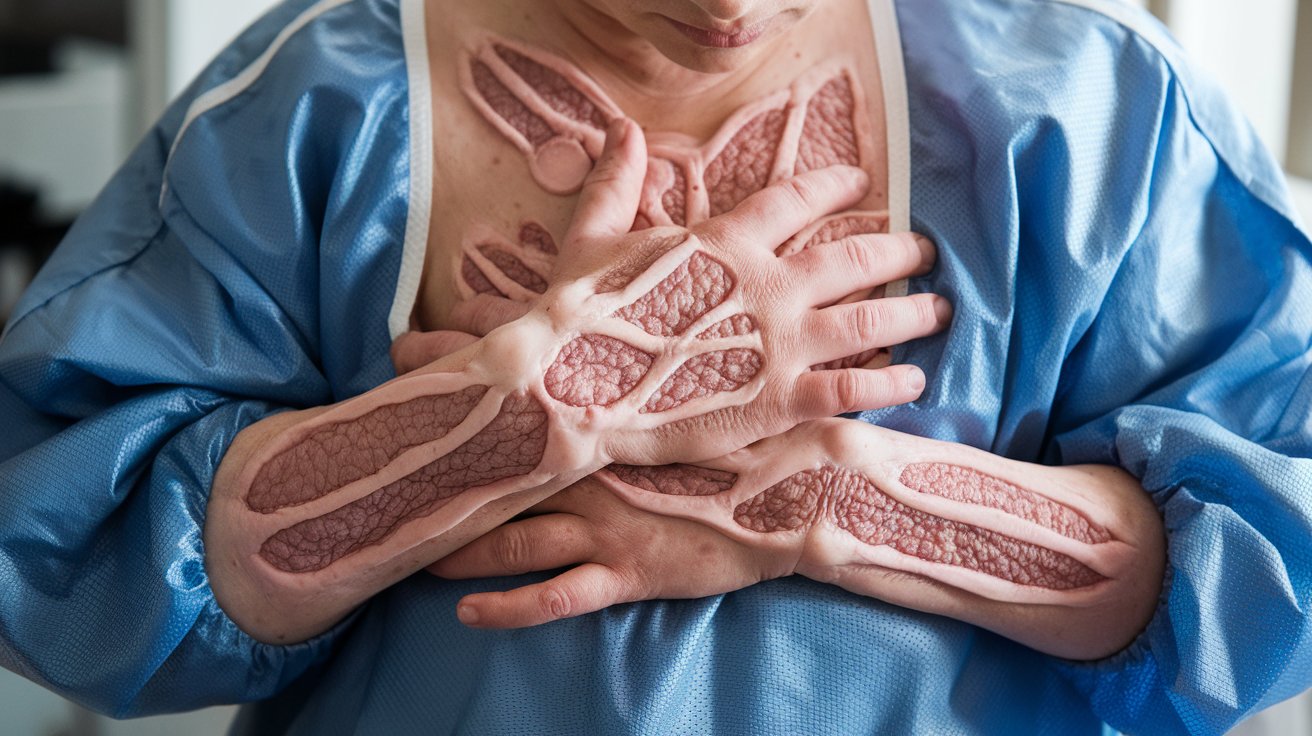
Congenital Generalized Fibromatosis is a rare condition that affects newborns, causing multiple fibrous tumors to form throughout the body. These tumors can appear in various organs, including the skin, muscles, and bones. What causes Congenital Generalized Fibromatosis? The exact cause remains unknown, but researchers believe it may involve genetic mutations or environmental factors during pregnancy. Symptoms can range from mild to severe, impacting the child's overall health and development. Early diagnosis and treatment are crucial for managing this condition effectively. In this article, we will explore 25 essential facts about Congenital Generalized Fibromatosis, shedding light on its symptoms, diagnosis, and treatment options.
Key Takeaways:
- CGF is a rare genetic disorder causing fibrous tumors throughout the body. Early diagnosis and tailored treatment plans are crucial for managing symptoms and preventing complications.
- Living with CGF can be challenging, but support groups, healthy lifestyle choices, and ongoing research offer hope for improved understanding and treatment options in the future.
What is Congenital Generalized Fibromatosis?
Congenital Generalized Fibromatosis (CGF) is a rare genetic disorder characterized by the presence of multiple fibrous tumors throughout the body. These tumors, known as fibromas, can affect various organs and tissues, leading to a range of health issues. Understanding CGF can help in managing the condition better.
- CGF is a genetic disorder, meaning it is inherited from parents.
- The condition is extremely rare, with only a few hundred cases reported worldwide.
- Fibromas can develop in any part of the body, including the skin, muscles, and internal organs.
- The exact cause of CGF is still unknown, but it is believed to be linked to genetic mutations.
- Symptoms of CGF can vary widely depending on the size and location of the fibromas.
Symptoms and Diagnosis
Recognizing the symptoms of CGF early can lead to better management of the condition. Diagnosis often involves a combination of physical examinations, imaging tests, and genetic testing.
- Common symptoms include lumps under the skin, pain, and restricted movement.
- In severe cases, fibromas can interfere with organ function, leading to life-threatening complications.
- Imaging tests like MRI and CT scans are used to detect the presence and extent of fibromas.
- Genetic testing can help confirm the diagnosis by identifying specific mutations associated with CGF.
- Early diagnosis is crucial for managing symptoms and preventing complications.
Treatment Options
While there is no cure for CGF, various treatment options can help manage symptoms and improve quality of life. Treatment plans are often tailored to the individual needs of the patient.
- Surgical removal of fibromas is a common treatment option, especially if they are causing pain or other complications.
- Radiation therapy may be used to shrink fibromas that cannot be surgically removed.
- Medications can help manage pain and inflammation associated with fibromas.
- Physical therapy can improve mobility and reduce discomfort caused by fibromas.
- Regular monitoring and follow-up care are essential to manage the condition effectively.
Living with Congenital Generalized Fibromatosis
Living with CGF can be challenging, but with the right support and care, individuals can lead fulfilling lives. Understanding the condition and seeking appropriate medical care is key.
- Support groups and counseling can provide emotional support and practical advice for managing CGF.
- Maintaining a healthy lifestyle, including a balanced diet and regular exercise, can help improve overall well-being.
- Patients with CGF should have regular check-ups with their healthcare provider to monitor the condition and adjust treatment as needed.
- Educating family and friends about CGF can help create a supportive environment for the patient.
- Advances in medical research are continually improving our understanding of CGF and leading to new treatment options.
Research and Future Directions
Ongoing research is crucial for improving the diagnosis and treatment of CGF. Scientists are exploring various avenues to better understand the genetic basis of the condition and develop more effective therapies.
- Researchers are studying the genetic mutations associated with CGF to identify potential targets for treatment.
- Clinical trials are underway to test new medications and therapies for managing CGF.
- Advances in genetic engineering and gene therapy hold promise for future treatments of CGF.
- Collaboration between researchers, healthcare providers, and patients is essential for advancing our understanding of CGF.
- Increased awareness and funding for CGF research can lead to better outcomes for patients in the future.
Final Thoughts on Congenital Generalized Fibromatosis
Congenital Generalized Fibromatosis (CGF) is a rare condition that affects connective tissues, leading to the formation of multiple fibrous tumors. These growths can appear anywhere in the body, causing various symptoms depending on their location and size. Early diagnosis and treatment are crucial for managing CGF effectively. While surgery is often required to remove tumors, ongoing medical care and monitoring are essential to prevent recurrence and address any complications.
Understanding CGF helps in recognizing the challenges faced by those living with this condition. Increased awareness can lead to better support systems and advancements in treatment options. Though rare, CGF's impact on individuals and families is significant, making continued research and education vital. Stay informed, support those affected, and advocate for further studies to improve the lives of those with CGF.
Frequently Asked Questions
Was this page helpful?
Our commitment to delivering trustworthy and engaging content is at the heart of what we do. Each fact on our site is contributed by real users like you, bringing a wealth of diverse insights and information. To ensure the highest standards of accuracy and reliability, our dedicated editors meticulously review each submission. This process guarantees that the facts we share are not only fascinating but also credible. Trust in our commitment to quality and authenticity as you explore and learn with us.


